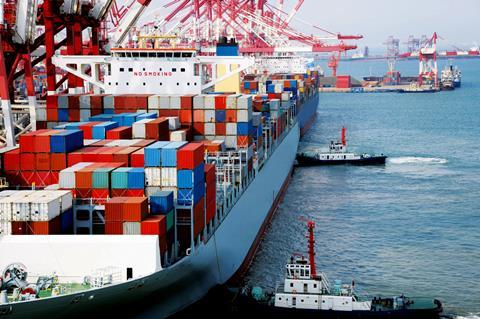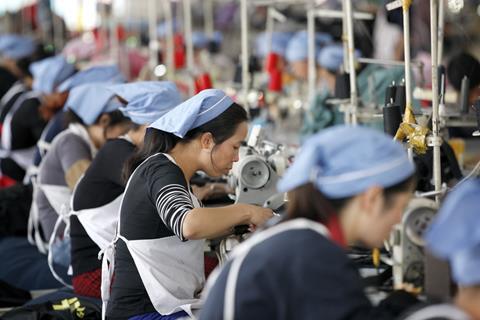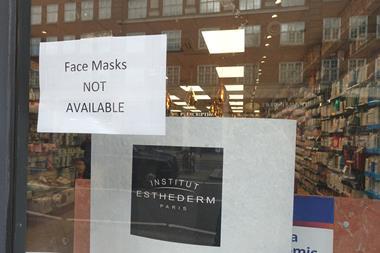The next month will be a make or break period for many retailers desperate to avoid empty shelves as the coronavirus crisis and its impact on the supply chain intensifies.
As the virus continues to wreak havoc across China and new diagnoses emerge in Italy and Iran, the pressure is mounting on retail supply chains, as acknowledged today by fashion giant Primark, which warned of the possibility of product shortages this year.
It is not just fashion retailers that are concerned. General merchandise retailers selling anything from games to gardening goods are increasingly worried, and several retail chiefs told Retail Week the next four to six weeks will be critical for Chinese supply to return to normal – or at least show some big signs of recovery – in China to avoid product shortages.

One value retail boss has said “a big bubble is building” in the supply chain, which will impact product availability “over the next four to six weeks”, while one home goods and furniture chief executive anticipated that supply problems would “start to hit home in four weeks” and result in “customer issues”.
“We’re in a good position at the moment, but by end of March the vast majority of fashion and homeware retailers will feel the effects,” he added.
While many general merchandise and homewares retailers built up supply ahead of Christmas and in anticipation of Chinese New Year – when factory workers typically go home for an extended break – many fear they will soon run low on stock.
This situation has been exacerbated by the fact that, despite the fact that many factories in China have now reopened after being shut down amid coronavirus fears, in many cases the vast majority of workers, many of who went home to rural areas at New Year, have not yet returned due to public transport lockdowns or health fears.
All factories need to obtain a government licence to reopen following the outbreak of the virus, and ships leaving ports also have to obtain a licence before they can depart China, according to one chief executive.
How much do UK retailers source from China?
- Asos: 25% of own-label
- B&M: 70% of general merchandise
- John Lewis: 20%-30%
- Marks & Spencer: c15%
- Next: c19%
- Primark: c45%
- AO World: c30%
Source: Shore Capital
Two general merchandise retail bosses said the Chinese factories they source from had approximately just 10% and 20% of their usual capacity of workers on site respectively, while the boss of one accessories retailer said that “production capacity is at 20% to 30% because they cannot get the new workers back in.”
Another homewares boss said while in some factories 70% of staff have returned, factories in Wuhan, where coronavirus first took hold and which is a significant hub for fabric production, are still in lockdown.
He expected the disruption to availability to jeopardise 15% of the retailer’s revenue.
“There are currently three or four products we can’t take orders for, but that will rapidly increase in the next few weeks,” he said.

“We’re looking to suppliers in eastern European cities and towns and it’s made us realise we have too many eggs in the Chinese market.”
One general merchandise retail boss echoed that view and said while some fashion retailers have been able to mitigate disruption by relying on other production hubs such as Turkey and Bangladesh, the options are “rather more limited in terms of speed” for retailers selling toys and homewares.
The accessories retailer said his business has taken the extreme measure of transporting products by air rather than by ship to avoid product shortages, cutting down fulfilment times from five weeks to five days.
A spokeswoman for one stationery retailer said the business has sidestepped some disruption through domestic sourcing and early shipments but expected that rivals could be harder hit.
“We’ve also been looking to repatriate a lot of the design and production of our cards back into the UK,” she said.
“Yes, we buy a lot of the raw material in China at the minute, but we have backup plans for all products including looking to source materials from India.
“Others in the sector will be in much worse shape as their stock is not only sourced but also produced and designed in China. It’s going to be those businesses that are going to end up seeing gaps on the shelves if this doesn’t let up in the next couple of weeks.”
For retailers in all sorts of categories, it is set to be a nailbiting fortnight.
Coronavirus: Crunch time looms for general merchandise supply chain

The next month will be a make or break period for many retailers desperate to avoid empty shelves as the coronavirus crisis and its impact on the supply chain intensifies.
 Currently
reading
Currently
reading
Coronavirus: Crunch time looms for general merchandise supply chain
- 2
- 3































No comments yet